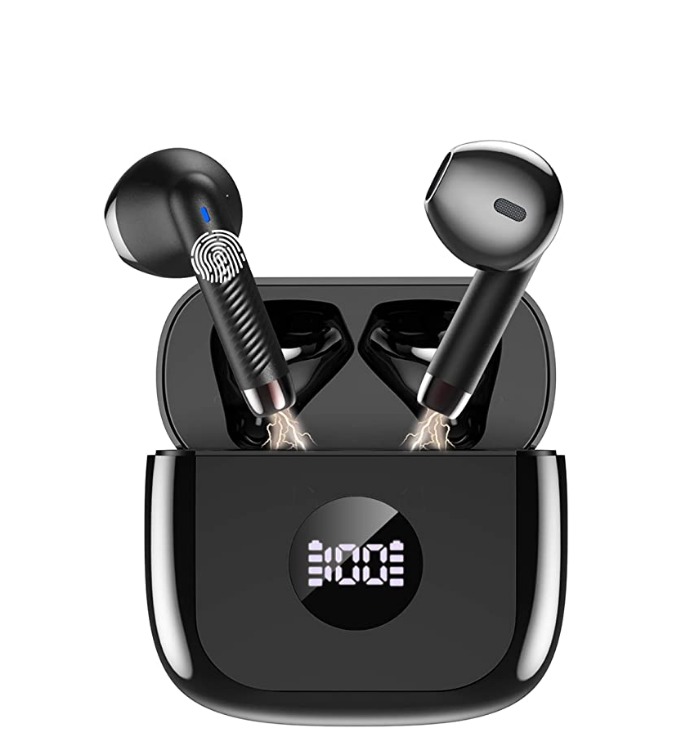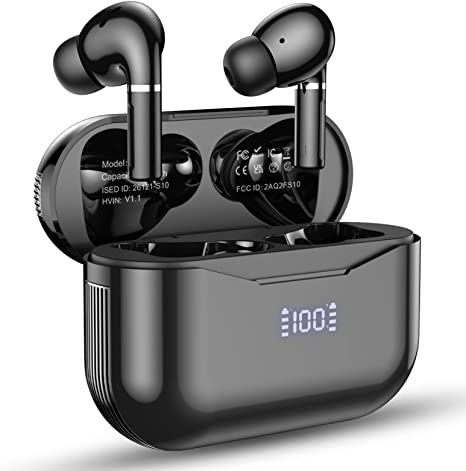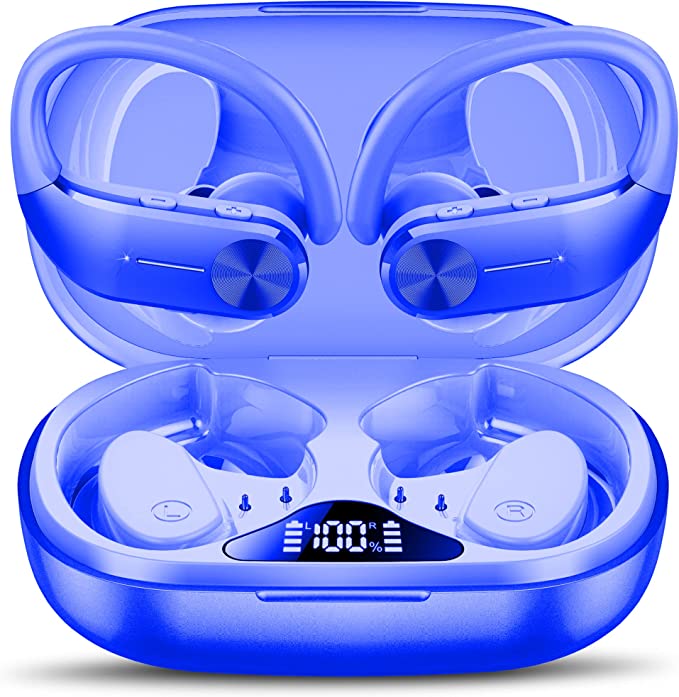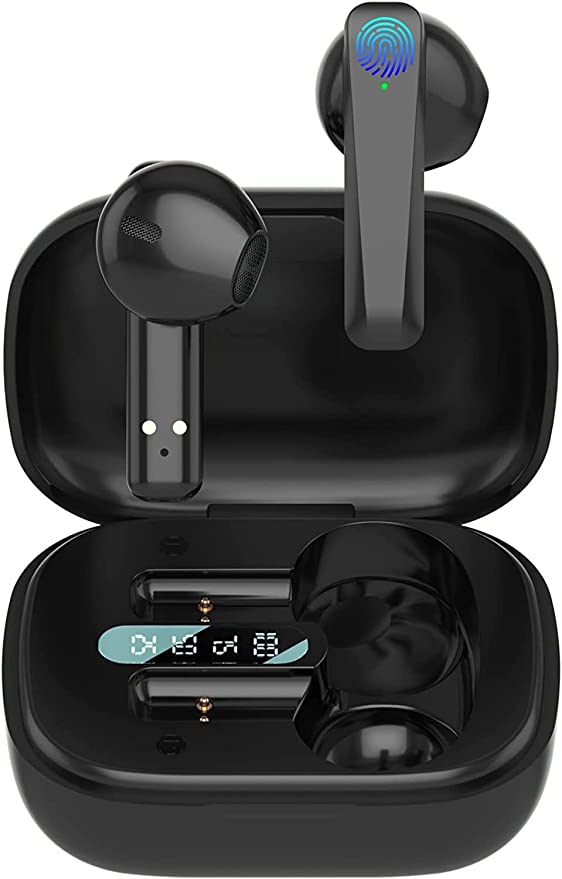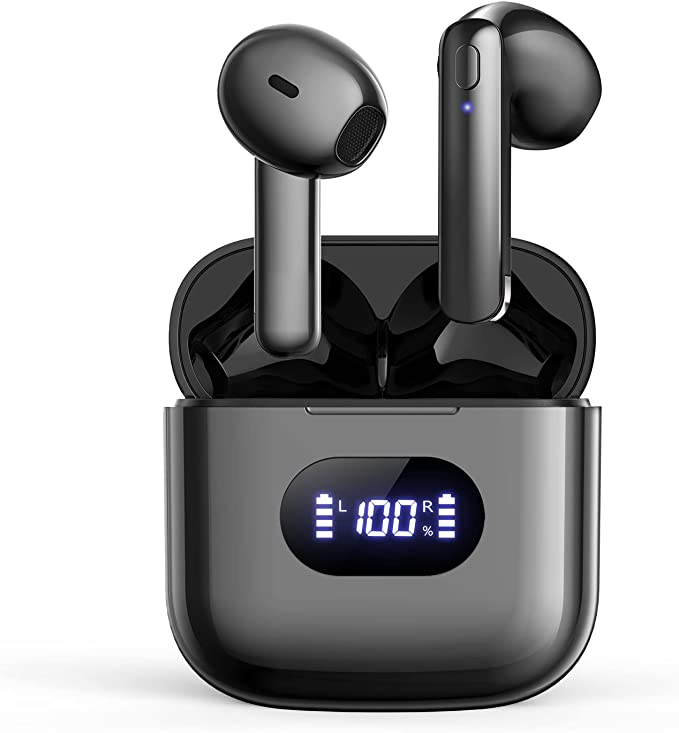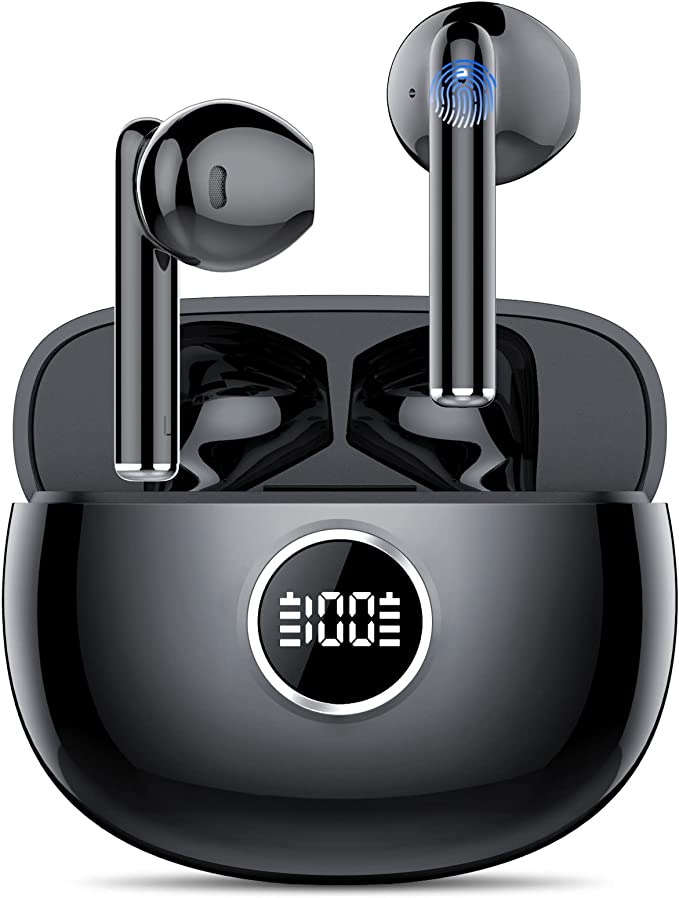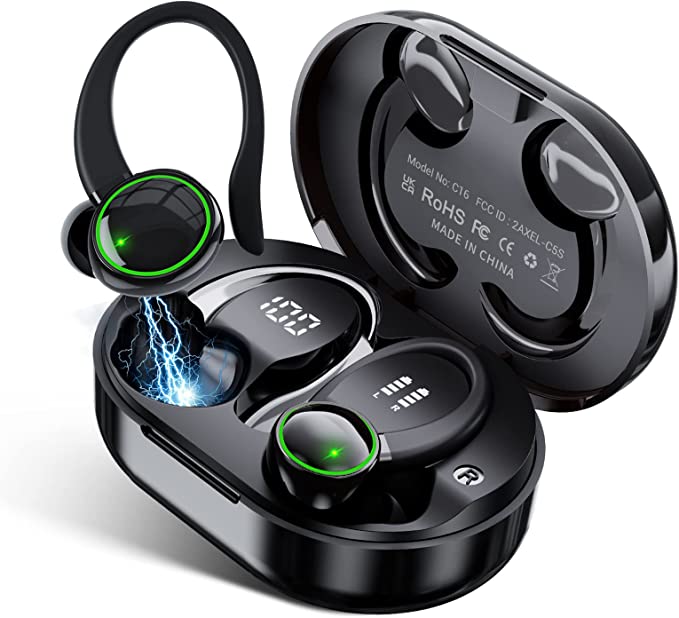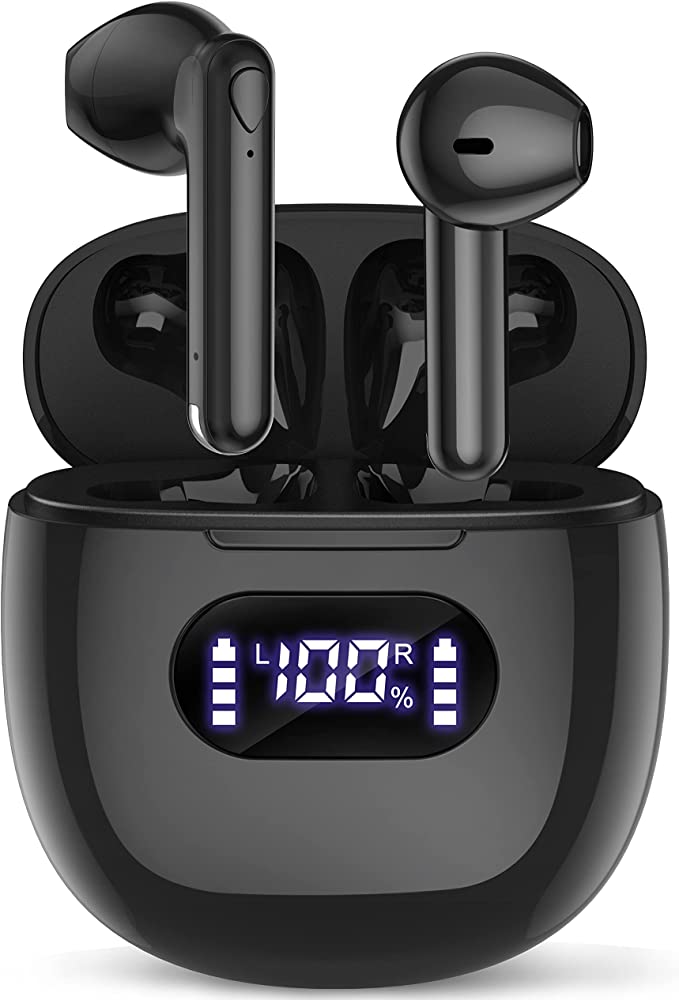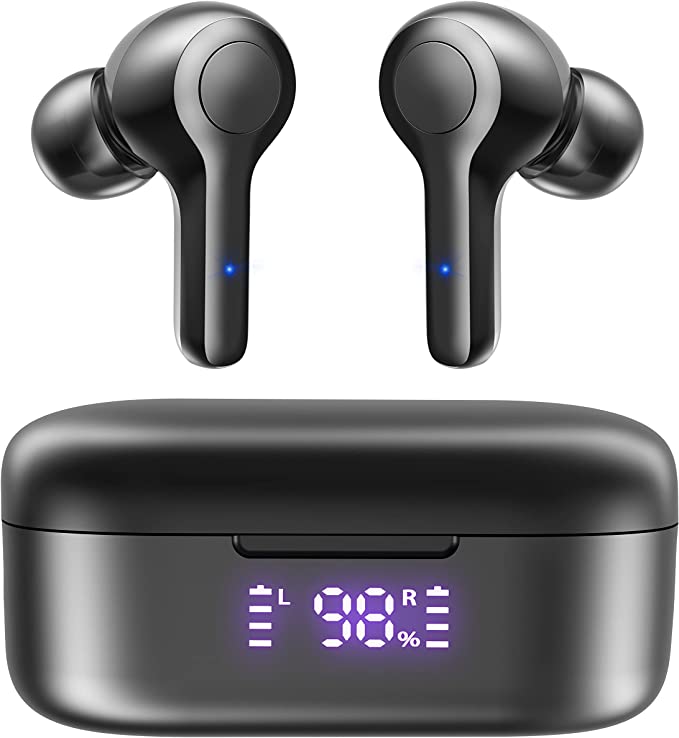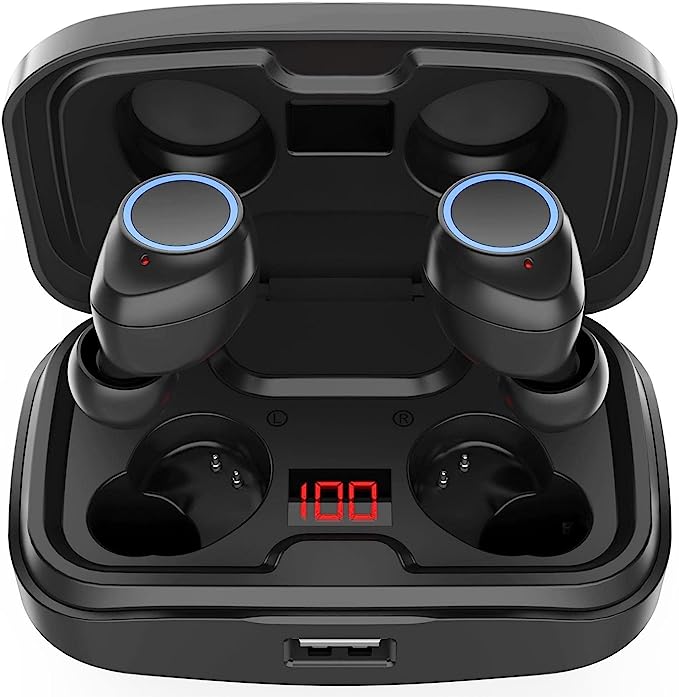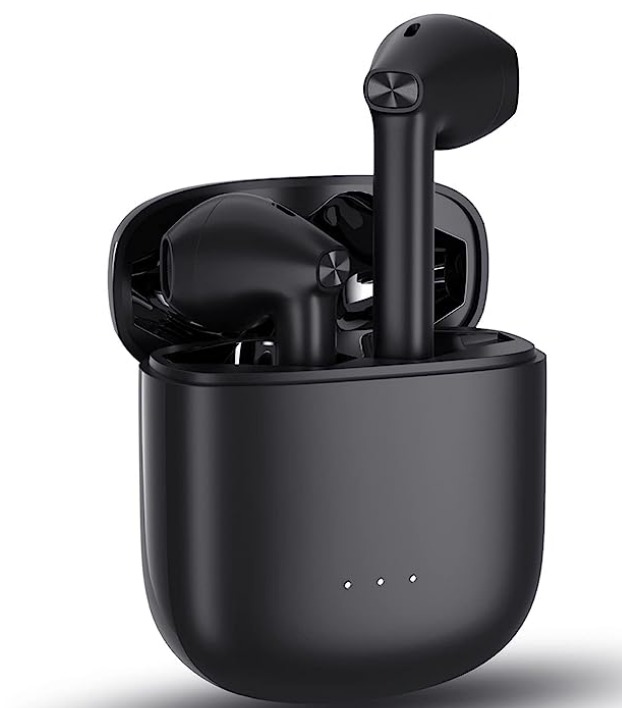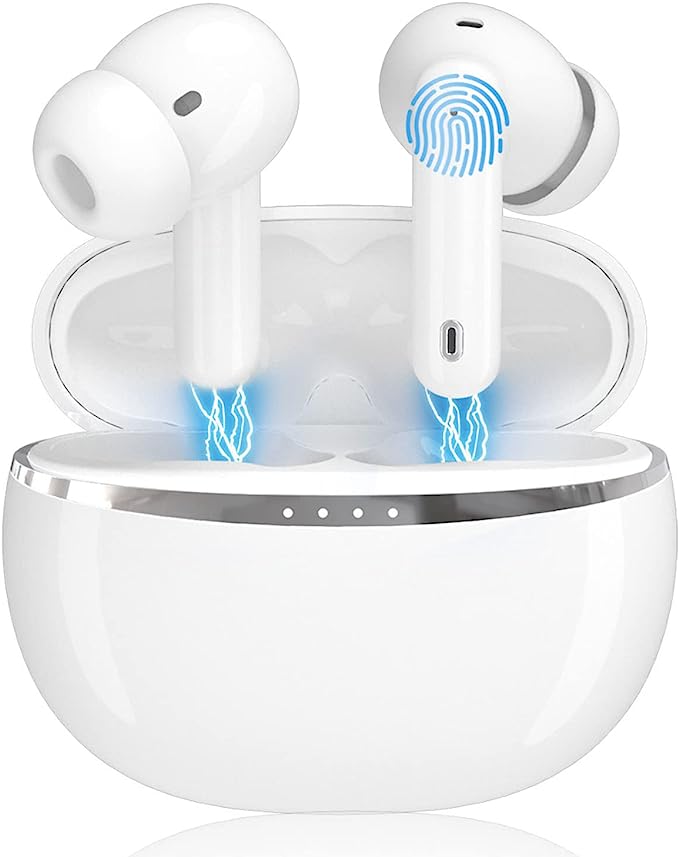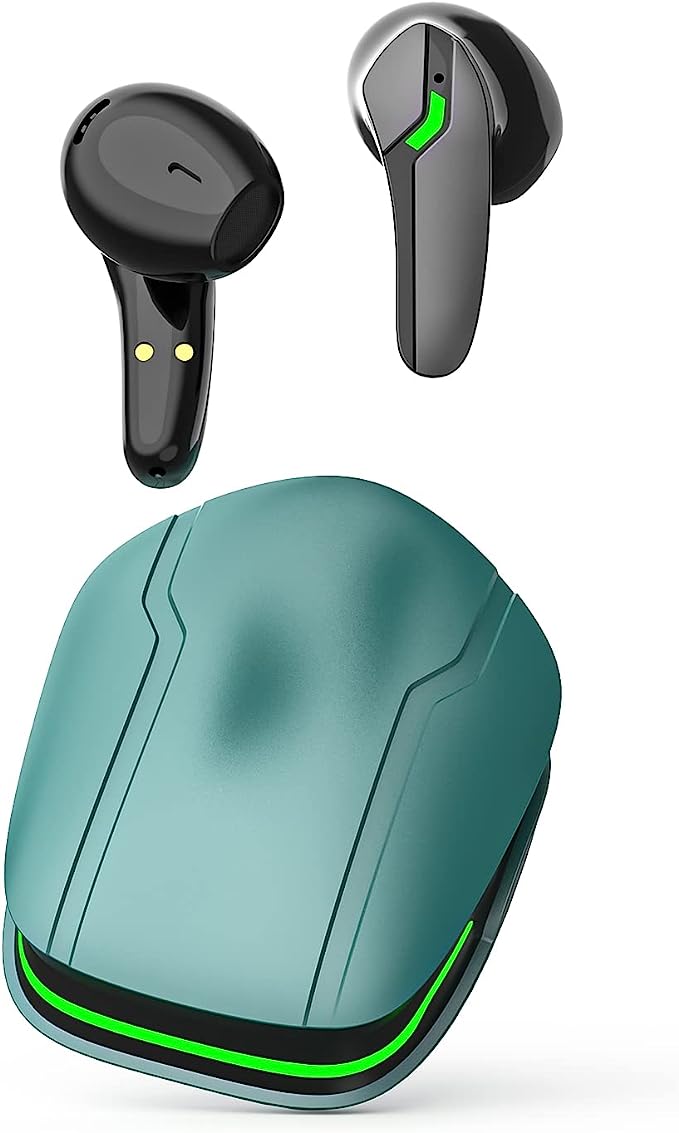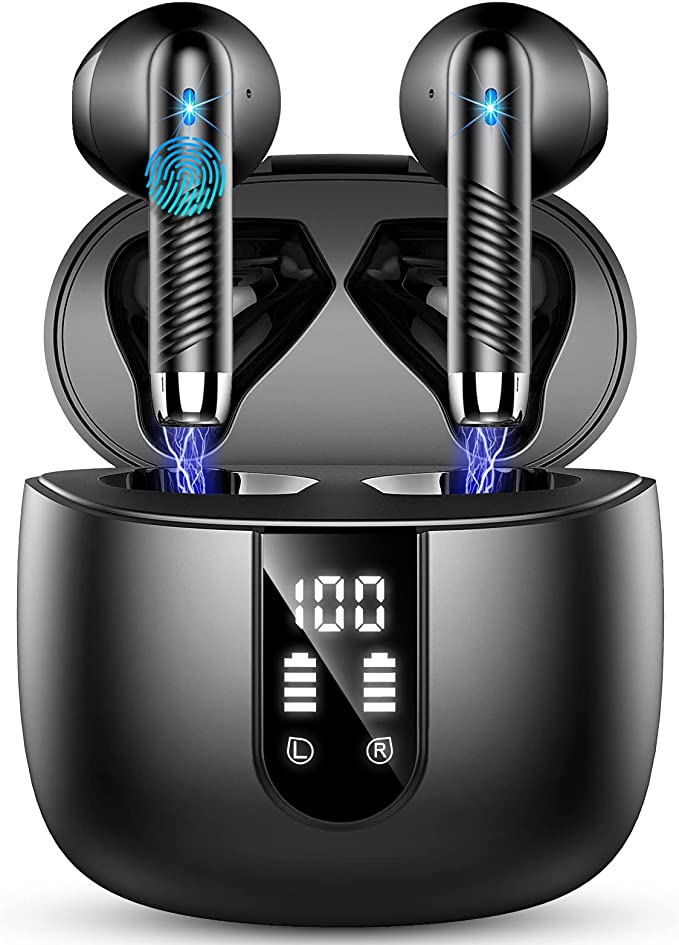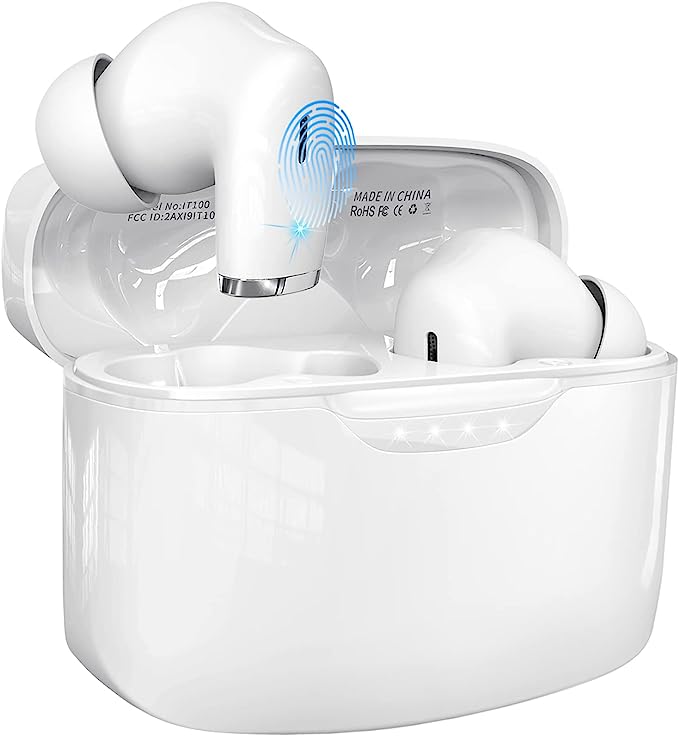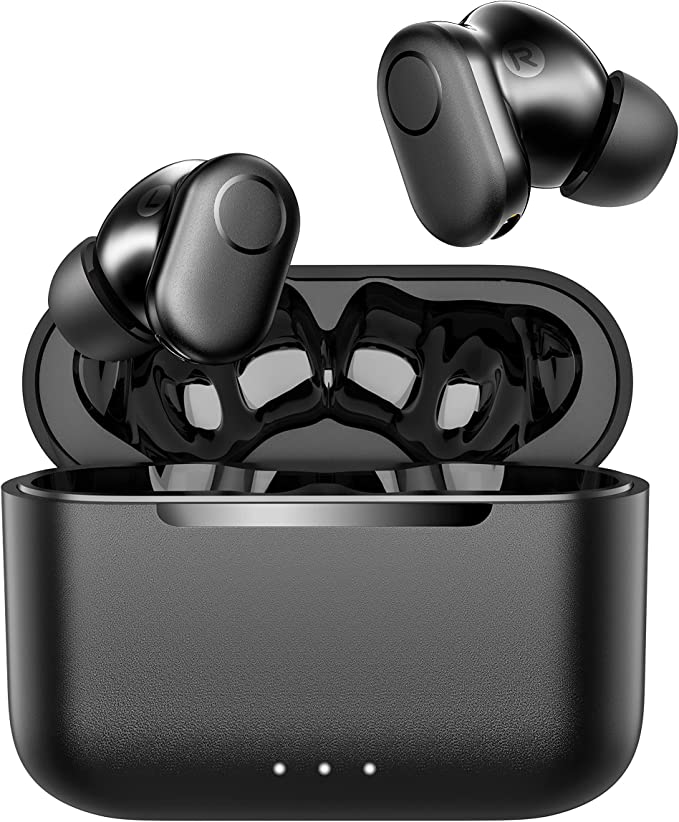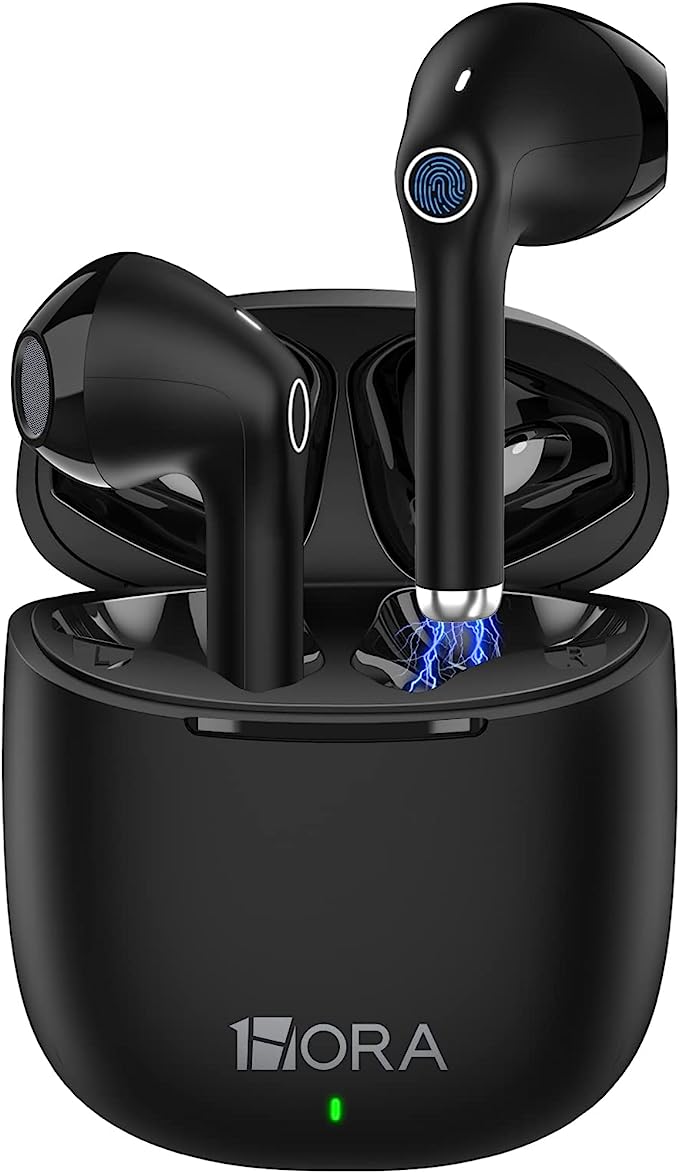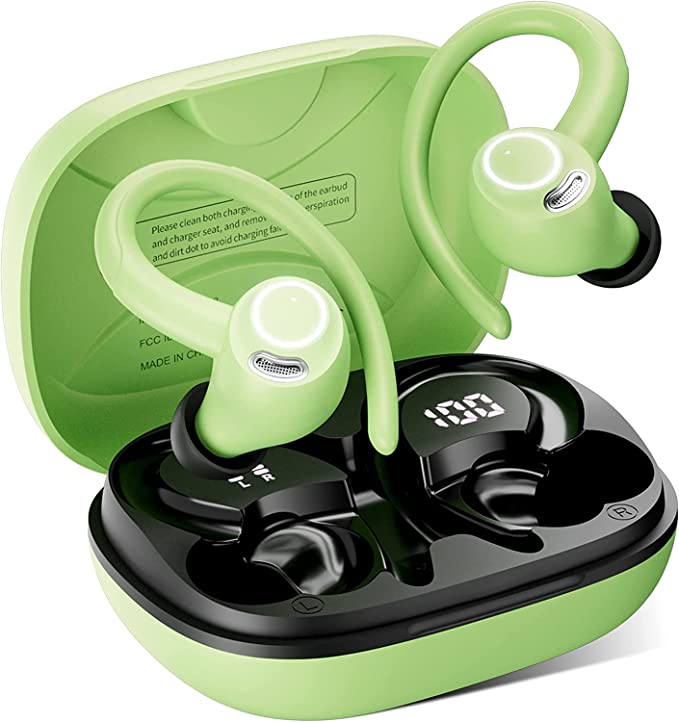Baseus Bowie MA10: Unveiling the Science of Sound and Silence
Update on Feb. 17, 2025, 2:24 p.m.
A World of Noise (and the Quest for Quiet)
Imagine you’re on a crowded subway, the screech of brakes and the rumble of the tracks assaulting your ears. Or perhaps you’re trying to focus on work in a bustling coffee shop, surrounded by the clatter of keyboards and the murmur of conversations. We live in a world increasingly saturated with noise, and our innate human desire for moments of peace and quiet is often challenged. The Baseus Bowie MA10 wireless earbuds, with their advanced noise-canceling technology, offer a compelling solution to this modern-day problem. But how do they achieve this sonic sanctuary? Let’s delve into the fascinating science behind these impressive earbuds.

Sound: The Invisible Wave
Before we explore how to cancel sound, we need to understand what it is. Sound, at its essence, is a vibration that travels through a medium, like air, as a wave. Think of dropping a pebble into a still pond. The ripples that spread outward are analogous to sound waves. These waves have key characteristics:
- Frequency: This determines the pitch of the sound. Imagine a guitar string: a thicker, looser string vibrates slowly, producing a low-frequency, low-pitched sound. A thinner, tighter string vibrates quickly, producing a high-frequency, high-pitched sound. We measure frequency in Hertz (Hz), which represents cycles per second. Humans can typically hear sounds between 20 Hz (very low bass) and 20,000 Hz (very high treble).
- Amplitude: This determines the loudness of the sound. Back to our pebble analogy: a small pebble creates small ripples (low amplitude, quiet sound), while a large rock creates large ripples (high amplitude, loud sound). We measure amplitude in decibels (dB). The decibel scale is logarithmic, meaning that a 10 dB increase represents a tenfold increase in sound intensity.
- Sound Pressure Level: It’s crucial to be aware of the relationship between the decibel (dB) scale, Sound Pressure Level (SPL), and hearing damage. SPL measures the pressure of a sound wave relative to a reference pressure, and it’s what our ears perceive as loudness.

The Unseen Foe: Noise Pollution and Its Impact
Noise isn’t just an annoyance; it’s a genuine pollutant. Prolonged exposure to loud noises can lead to hearing loss, stress, sleep disturbances, and even cardiovascular problems. The constant bombardment of sounds in urban environments can also negatively impact our concentration and cognitive function. Finding ways to mitigate noise pollution is, therefore, crucial for our overall well-being.
The Science of Silence: Active Noise Cancellation
This is where the magic of Active Noise Cancellation (ANC) comes in. The core principle behind ANC is elegantly simple: destructive interference. Remember those ripples in the pond? If you could create a second set of ripples that were perfectly out of phase with the first set – meaning the crests of one set aligned with the troughs of the other – the two sets of ripples would cancel each other out, leaving a calm surface. ANC does the same thing with sound waves.
Inside the -48dB: A Deep Dive into ANC Technology
The Baseus Bowie MA10 earbuds achieve an impressive -48dB of noise reduction. Let’s break down how this works:
- Microphones: Tiny, highly sensitive microphones, often using MEMS (Micro-Electro-Mechanical Systems) technology, are embedded in the earbuds. These microphones “listen” to the ambient noise surrounding you. There are typically two types: feedforward microphones (placed on the outside of the earbud) that capture noise before it reaches your ear, and feedback microphones (placed inside the earbud) that monitor the sound that actually reaches your ear.
- Digital Signal Processing (DSP): This is the brain of the operation. The signals from the microphones are fed into a sophisticated Digital Signal Processor (DSP) chip. This chip performs a complex mathematical operation called the Fast Fourier Transform (FFT). The FFT essentially breaks down the incoming noise signal into its individual frequency components – like separating a musical chord into its individual notes. The DSP then analyzes these frequencies and generates an “anti-noise” signal that is precisely 180 degrees out of phase with the original noise.
- Speakers: The earbuds’ speakers then emit this anti-noise signal. When the original noise wave and the anti-noise wave meet, they undergo destructive interference, effectively canceling each other out.
- The -48dB Difference: A -48dB noise reduction means that the sound pressure level of the ambient noise is reduced by 48 decibels. This is a significant reduction. To put it in perspective, a normal conversation is around 60 dB. A -48dB reduction would bring that down to 12 dB – quieter than a whisper. Of course, the effectiveness of ANC varies depending on the frequency of the noise. ANC is generally most effective at reducing low-frequency sounds, like the rumble of an engine or the hum of an air conditioner.

Clear Calls in a Noisy World: Environmental Noise Cancellation (ENC)
While ANC focuses on creating a quiet environment for you, Environmental Noise Cancellation (ENC) focuses on making your voice clear to the person on the other end of a phone call.
- ANC vs. ENC: It’s important to distinguish between these two technologies. ANC primarily benefits the listener, while ENC primarily benefits the person they are speaking to.
- Beamforming: The Baseus Bowie MA10 uses four ENC microphones. These microphones work together in a process called “beamforming.” Imagine several microphones arranged in a line. By carefully analyzing the slight time differences in when a sound wave arrives at each microphone, the DSP can determine the direction of the sound source. It can then amplify the sounds coming from the direction of your mouth (your voice) while suppressing sounds coming from other directions (background noise).

Feature Focus: The Baseus Bowie MA10 – Sound and Silence, Uninterrupted
Let’s examine how these core technologies, along with other features, combine to create a superior listening experience:
-
Seamless Connectivity: The Magic of Bluetooth 5.3: The Bowie MA10 utilizes the latest Bluetooth 5.3 technology. This offers several significant advantages over older Bluetooth versions:
- Enhanced Stability: Bluetooth 5.3 provides a more robust and reliable connection, minimizing dropouts and interruptions, even in environments with a lot of wireless interference. Imagine walking through a busy airport – your connection is less likely to falter.
- Lower Power Consumption: Bluetooth 5.3 is designed to be more energy-efficient. This translates to longer battery life for your earbuds, allowing you to enjoy your music for extended periods without needing to recharge.
- Reduced Latency: Latency refers to the delay between when an audio signal is sent and when you hear it. Bluetooth 5.3 significantly reduces latency, which is crucial for activities like gaming and watching videos, where even a slight delay can be noticeable and disruptive. The 0.038s latency of the Bowie MA10 ensures a near-synchronous audio-visual experience.
- Better Audio Quality
-
Power That Lasts: 140 Hours of Uninterrupted Listening: The Baseus Bowie MA10 boasts an impressive 140 hours of total playback time (this includes the charging case). This extended battery life is a significant advantage, freeing you from the constant worry of running out of power. The earbuds themselves likely hold a smaller charge (exact capacity unknown without official data), and the charging case provides multiple additional charges. The fast charging feature (specific technology unknown) further enhances convenience, allowing you to quickly top up the battery when needed. This exceptional battery performance is likely achieved through a combination of a high-capacity lithium-ion battery, efficient power management circuitry, and the low power consumption of Bluetooth 5.3.
-
Built to Endure: IPX6 Water Resistance: The IPX6 rating signifies that the Baseus Bowie MA10 earbuds are protected against powerful water jets. This means you can confidently use them during workouts without worrying about sweat damage, and they can even withstand being caught in a downpour. The “IP” code stands for “Ingress Protection,” and the “6” indicates the level of protection against water.
-
A Perfect Fit: Comfort and Sound Isolation:
- The fit of earbuds is crucial not only for comfort but also for sound quality. A good seal between the ear tip and your ear canal is essential for effective noise isolation, which complements the ANC technology. The Baseus Bowie MA10 likely comes with a selection of different-sized ear tips (typically silicone) to accommodate various ear shapes and sizes.
- The use of different sizes of ear tips is a common and effective way to ensure a comfortable and secure fit for a wide range of users.
- Proper Insertion.

The Future of Audio:
The Baseus Bowie MA10 represents a significant step forward in wireless audio technology, but the journey is far from over. We can expect to see continued advancements in ANC performance, with even more sophisticated algorithms and adaptive noise cancellation that automatically adjusts to changing environments. Personalized sound profiles, tailored to individual hearing characteristics, are also on the horizon. Spatial audio, which creates a more immersive 3D soundstage, is another exciting development. And, of course, the quest for even longer battery life and faster charging will continue.

Conclusion: Your Personal Oasis of Sound
The Baseus Bowie MA10 wireless earbuds offer a compelling combination of cutting-edge technology, impressive performance, and user-friendly design. By understanding the science behind features like ANC, ENC, and Bluetooth 5.3, we can appreciate the ingenuity that goes into creating these devices. Whether you’re seeking a refuge from the noise of modern life or simply want to enjoy your music in pristine quality, the Bowie MA10 provides a powerful and portable solution – a personal oasis of sound in an increasingly noisy world.
